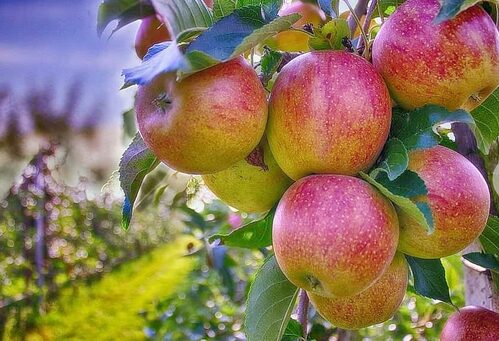Shimla: Climate change is posing an existential threat to the precarious lives of fruit growers across Himachal Pradesh, the country’s fruit bowl ranking second in apple and almond production.
The farmers in the state are experimenting with different crops, growing tactics and technology to cope with warmer winters and unprecedented rain and drought.
Farmers and trade insiders say that the overall apple production in the state has been erratic since 2010.
The production of apples this year is almost half of the 2010 yield of 8.92 lakh metric tons. In between 2010 and 2023, except for 7.77 lakh metric tons in 2015, the yield was as low as 2.75 lakh tons in 2011 and 3.69 lakh tons in 2018.
Experts and growers believe that changes in precipitation patterns like frequent extreme weather events both in summer and winter have even impacted the taste, colour and texture of apples.
Fluctuations in temperatures from December to February, for example, every year have been preponing flowering in apple trees in spring and altering the timing of key plant physiological events like early bud break and full bloom period.
Himachal’s apple boom is credited to Samuel Evans Stokes (later named Satyanand Stokes), an American missionary who first introduced the high-quality apples in the mid-altitude hills.
From a small orchard in Kotgarh, Stokes promoted apple cultivation in other areas too, especially in upper Shimla.
Since then, the hill state has been synonymous with apples that alone constitute 89 per cent of the state’s fruit economy of Rs 5,000 crore.
“We are now fighting for our livelihood as climate change reduces crop yield and increases crop failures,” said Deepak Tegta, a prominent grower in Jubbal, state’s apple basket in Shimla district.
He told that the main reason for the decline in the crop over the years is largely due to the lack of winter snow and extensive rainfall during the spring and thereafter.
“Fluctuation in temperatures starts with March and lasts till May, impacting the timing of key plant physiological events like delay in bud break and full bloom period,” he said. The unprecedented hail in May-June every year is damaging the crop extensively.
Octogenarian grower Naresh Daulta of Karsog in Mandi district told that changes in precipitation patterns like frequent extreme weather events both in summer and winter have been impacting the taste, colour and texture of apples.
There has been a noticeable change in the snowfall pattern in the past 10-15 years, he said.
Snow is considered “white manure” for the apple orchards as it not only helps in meeting the minimum chilling requirement but also sustains the required level of moisture in the soil during summer.
“Earlier, there was an accumulation of three to four feet of snow in most of the mid-hills till March-end. Now you won’t find snow in our orchard by mid of February,” Daulta said, adding, “We are planning to replace old and senile apple plants with exotic high-yield varieties. But this requires a lot of investment. We are also planning to move to higher altitudes or go for vegetable cultivation.”
The weather fluctuation trend is noticeable in orchards located at an altitude of 1,500 metres, said S.P. Bhardwaj, a former Joint Director at the Y.S. Parmar University of Horticulture and Forestry.
The weather impact is not as severe for orchards in ranges located above 2,000 metres, he said.
New low-chilling and early maturing varieties are being introduced in the lower-altitude hills. Ageing orchards too are taking a toll on apple production.
Prominent mid-hills apple belts in Kotkhai, Kiari, Chirgaon, and Rohru in Shimla district, which alone account for 80 per cent of the state’s total apple production, Karsog, Churag and Seri in Mandi district and Ani and Dalash in Kullu district are prone to hailstorms.
Surveys by the state Horticulture Department show the productivity of apples ranges from six to 11.5 tons per hectare in the state, in comparison to 35 to 40 tons per hectare in advanced countries.
To rejuvenate the apple plantation and for the long-term development of the horticulture sector, a $171.50-million (Rs 1,134 crore) World Bank-funded project is being implemented in the state through the Himachal Pradesh Horticulture Development Society.
Apple is the state’s main fruit crop and is being grown in nine out of 12 districts. The area under apple has increased from 400 hectares in 1950-51 to 3,025 hectares in 1960-61 and 115,016 hectares in FY 2021-22.
Between 2007-08 and 2021-22, the area under apple has seen a growth of 21.4 per cent.
Besides apple, other fruits like pears, peaches, cherries, apricots, kiwi, strawberry, olive, almonds and plums are the major commercial crops of Himachal Pradesh.
A seasoned journalist with over two decades of experience, Vishal writes on a wide range of subjects which include biodiversity, climate change and links between environment & development. He also covers politics and other developments in Punjab and Himachal Pradesh. He lives in Chandigarh & Shimla.



